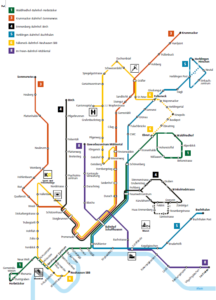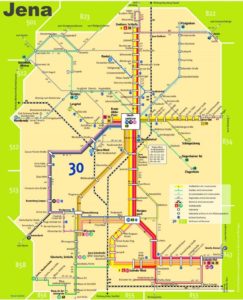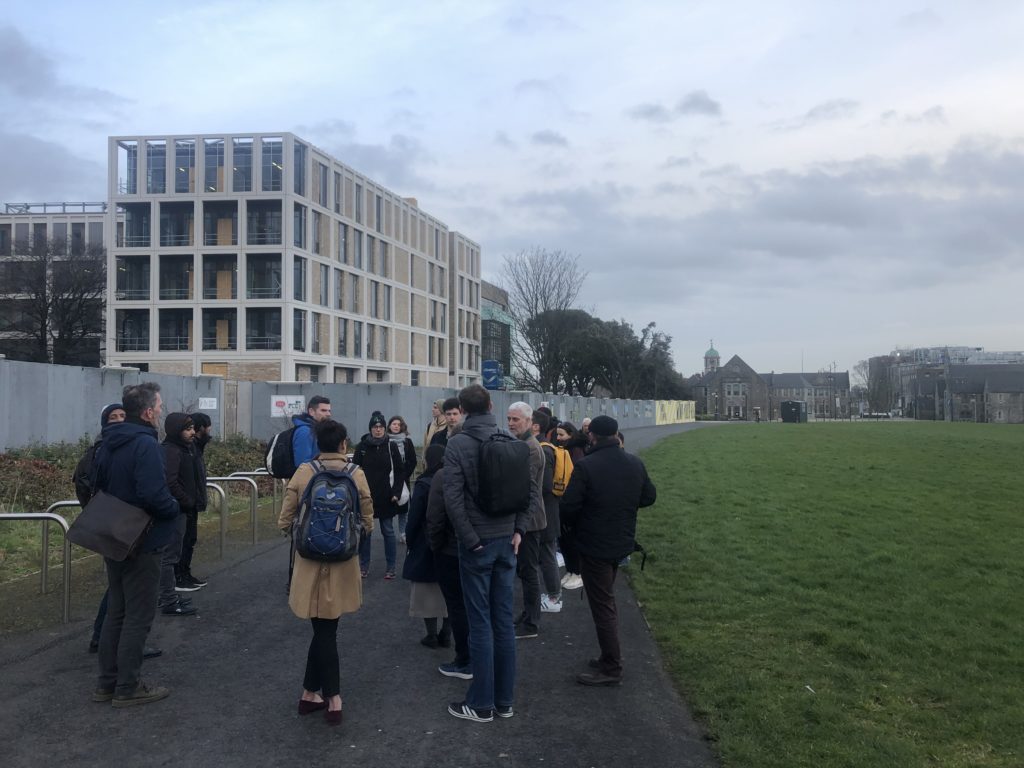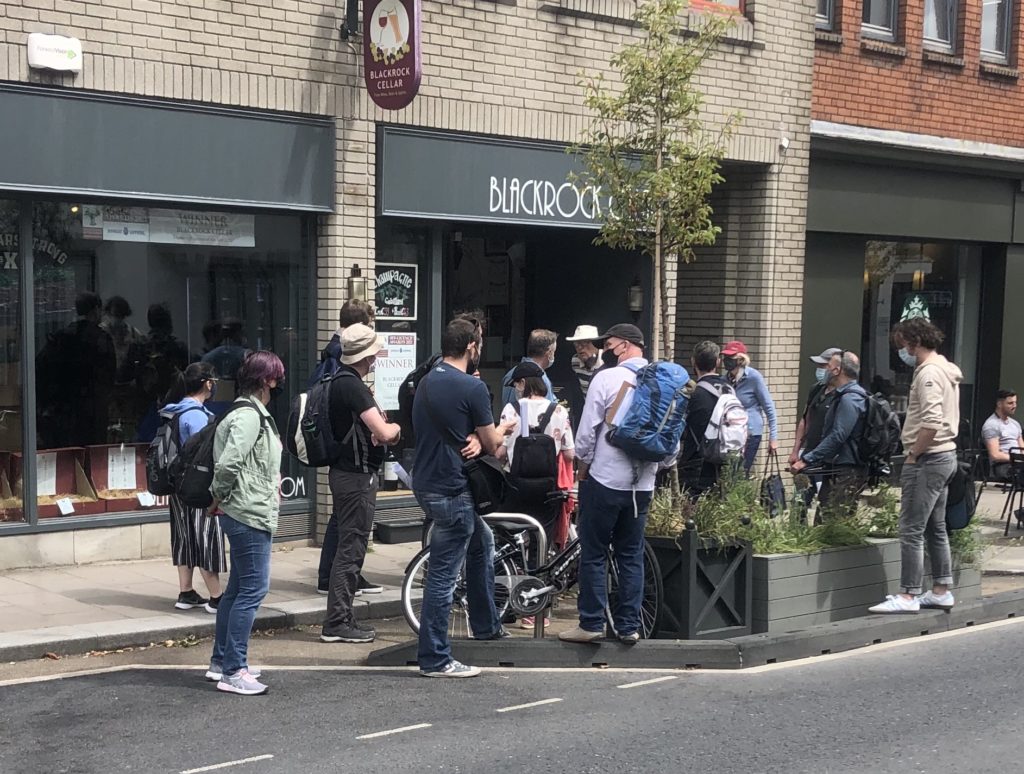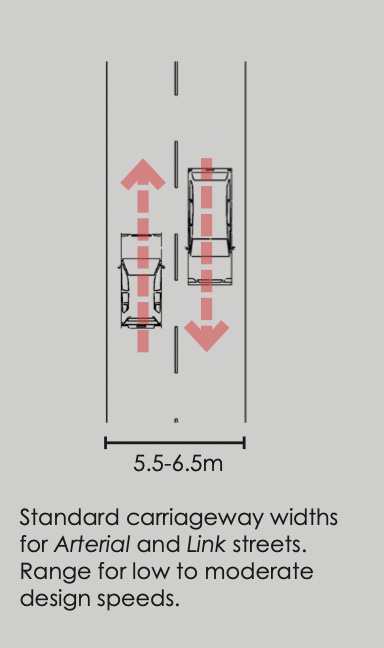Link to scheme proposal; deadline for submissions Wed, 26/04/2023 – 16:30
Thank you for the opportunity to make a submission on the Proposed Traffic Calming Measures on Pearse Street, Mitchel Street, Emmet Place, Kickham Street and Silver Street, Nenagh, which I make in a personal capacity.
I would like to welcome the proposed raised zebra crossings as part of this scheme. I believe their introduction will result in an improved walking environment in the centre of Nenagh. As a compact thriving town which has the potential to grow and thrive over the period of the new County Development Plan Nenagh has an exciting future ahead of it and the focus on the four streets that serve as the central circulation route for people who walk, cycle, take public transport and drive through Nenagh is welcome. Unfortunately there was no rationale provided for this scheme, only a series of drawings; and any plans proposed under previous County Development Plans to change traffic circulation in Nenagh are no longer available online to the public. I have some reservations about the increase in capacity for private vehicles in the centre of Nenagh that will result from this scheme, and the compatibility of this scheme with statutory plans, which I have detailed below.
Premature introduction of this scheme ahead of Nenagh Local Transport Plan
I took part in the survey last year, which invited input ahead of “delivery of a Local Transport Plan for Nenagh will identify the key infrastructural requirements of the Town and prioritise the transport interventions required in the plan area as the Town grows and develops over the next 10 years”. At the time of the consultation last year, there was a commitment to publish a draft Local Transport Plan for Nenagh later in 2022. While I understand that the publication of the draft plan has been delayed, I suggest that this scheme is premature as it will define private vehicle traffic flows through the centre of Nenagh. Pausing this scheme to take account of an agreed Local Transport Plan, as recommended in the Regional Spatial and Economic Strategy for the Southern Region, would allow any scheme to change traffic flows in the centre of Nenagh (which have been unchanged since Kickham Street was the main road for traffic from Limerick, Clare, Kerry and North Tipperary to Dublin) to be supported by best practice and the provisions of the County Development Plan.
Compatibility with Tipperary County Development Plan 2022-2028
Modal shift targets [County Development Plan Policy 12-1 (a)]
(a) Support the achievement of the modal shift targets set out in Table 12.1 Modal Share Targets to apply to Tipperary, and require new development to demonstrate and ensure that land-use, connectivity and transportation are integrated in a manner which reduces reliance on car-based travel, promotes more sustainable transport choice, and co-ordinates particular land uses with their accessibility requirements.
It is not clear how this scheme is compatible with the latest adopted Development Plan for County Tipperary. The scheme will result in an increase in capacity for vehicles travelling through Nenagh town centre, and there is no provision for cycle facilities in the scheme. This appears to be in conflict with the modal shift target in Table 12.1 of the Development Plan which seeks to reduce the modal share of trips by car and van from 71% to 45% and to increase the modal share of trips by bicycle from 0.76% to 10%. Nenagh is Tipperary’s second largest town and if no provision is made for segregated cycling infrastructure in the middle of the town, it is difficult to see how this is compatible with the County Development Plan.
Design Manual for Urban Roads and Streets and National Sustainable Mobility Policy [County Development Plan Policy 12-1 (b)]
(b) Apply the principles of the National Sustainable Mobility Policy (DoT, 2022), the Design Manual for Urban Roads and Streets (DTTS and DHPLG, 2019) and the Design Manual for Urban Roads and Streets Interim Advice Note – Covid-19 Pandemic Response (2020).
The Design Manual for Urban Roads and Streets (DMURS), adopted in the development plan, specifically cautions against one-way systems like the one proposed in this scheme:
One-way streets have also been widely implemented, retrospectively, in order to filter vehicle permeability and relieve traffic congestion. The use of one-way systems for traffic management should also be approached with caution by designers as they:
- Promote faster speeds as drivers are likely to drive faster when no risk is perceived from oncoming traffic.
- Will result in longer vehicular journeys, including those for cyclists and public transport.
- Can be confusing for users when they deflect people away from destinations.
- Require additional signage.
Conversion to one-way systems may be beneficial on narrow carriageways where the street reserve is limited in order to provide additional space for pedestrians, cyclists and other public realm improvements. Counter flow cycle lanes should also be considered in order to maintain permeability for cyclists Examples include Centres where the implementation of a one-way system has direct placemaking benefits as it allows for additional footpath width and/or on-street parking (see Figure 3.24).
The proposed scheme proposes no reallocation of road space to more sustainable modes and there is no evidence that consideration has been made to provide additional space for pedestrians, cyclists and other public realm improvements. Examples exist in other local authority areas where Section 38 of the Road Traffic Act has been used to reallocate road space away from the private car towards walking and cycling.
It is a specific aim of the National Sustainability Policy to reallocate road space in urban centres away from the private car towards more sustainable modes: “rebalancing transport movement in metropolitan areas and other urban centres away from the private car and towards active travel and public transport.” It is difficult to see how the implementation of this scheme as proposed is compatible with this aim.
Integrated pedestrian and cycling networks and infrastructure [County Development Plan Policy 12-1 (c)]
(c) Development proposals shall be required to provide for well-integrated pedestrian and cycling networks and infrastructure, such as cycle parking, as part of their planning application and ‘Sustainability Statement’, where applicable, the development management standards Volume 3 will apply.
The draft CycleConnects Network published by the National Transport Authority included both an interurban cycle network throughout County Tipperary and a series of urban cycle networks for towns in the county, including Nenagh. The proposed scheme includes streets that are part of the proposed network: Pearse Street and Mitchel Street are designated as primary cycle routes (in red), and Emmet Place and Kickham Street are designated as secondary cycle routes (in blue). Without cycle infrastructure on these streets which represent key destinations in the centre of Nenagh, it is difficult to see how Nenagh can support a quality cycle network as envisioned under CycleConnects and supported by the Tipperary County Development Plan.

Accessibility for people with disabilities [County Development Plan Policy 12-1 (d)]
(d) To apply a ‘whole journey approach’ to make public transport fully accessible to people with disabilities’, this refers to all elements that constitute a journey from the starting point to destination including footpaths, tactile paving, cycle paths, roads, pedestrian crossing points, town greenways and bus stops/shelters in line with relevant Guidance from the Department of Transport.
The inclusion of bollards in the new proposed bus stop on Pearse Street are a cause of concern. Specifically, the bollards will restrict the approach of buses to the bus stop and in the event of obstructions or existing buses being stopped at the bus stop, may prevent low-floor buses from pulling up at the kerb in a manner that will enable the deployment of a ramp to assist people with disabilities to board or leave their bus. It is strongly recommended that these bollards are omitted from the plan as they may result in a reduction in accessibility for people using public transport to and from Nenagh.
The maintaining of the narrow footpath width on Emmet Place at less than 1.8m is below the minimum mandated by DMURS, which states that 1.8m is the minimum width necessary to allow two standard wheelchairs to pass each other. It is not clear whether there is room on Emmet Place to accommodate two lanes of traffic and cater for a minimum footpath width, never mind a greater width more appropriate for an urban centre close to many trip destinations.

